Mangrove Action Day is July 26, 2018 
GLOBAL – As part of this years Mangrove Action Day we are raising awareness of the connections people have with mangrove forests by creating a global photography exhibition. Throughout the month of July, we have asked for and received incredible photos from around the world. We invite you to send us your best photos for a chance to be part of a special exhibition that will help spread the importance of mangroves. Special prizes this year for our three chosen winners. Scroll down to get inspired by some mangrove themes and find out other ways in which you can get involved! WAYS YOU CAN ACT
READ MORE AFRICA
Forest conservation efforts in Madagascar making poor people even poorer

MADAGASCAR – New research investigating conservation efforts in Madagascar says some 27,000 people are suffering from restrictions aimed at maintaining tropical forest. The study, published in the PeerJ journal, suggests that people living in the protected area have not been fully compensated and their incomes are affected as a result. The Ankeniheny-Zahamena Corridor, in eastern Madagascar, is part of a pilot project under the Reducing Emissions from Deforestation and Forest Degradation (REDD) scheme supported by the World Bank. The REDD scheme aims to protect forests as part of the fight against climate change. The project is being implemented through a system of World Bank safeguards and as such is supposed to compensate local people for the impact that conservation restrictions have on their income. The study is not suggesting that conservation efforts should be stopped, instead it is calling for forest dwellers to be properly compensated for the impact conservation has on their livelihoods, in particular on traditional agricultural practices. READ MORE
African deforestation: 'If nothing is done, we may lose everything'
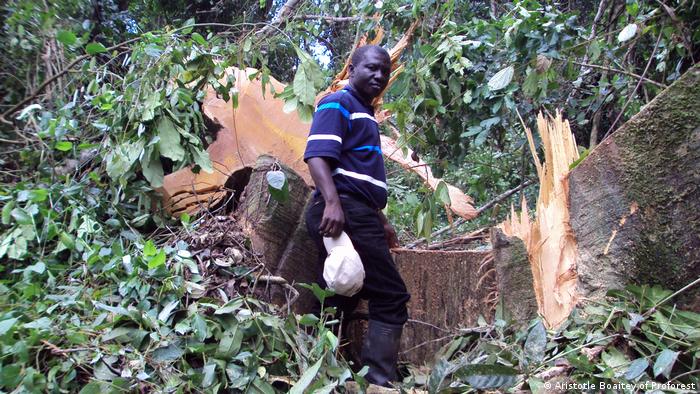
DRC – Africa's tropical forests, which include the Congo Basin, are under constant threat. Deutsche Welle speaks to Proforest's Abraham Baffoe on what stands to be lost and what needs to be done to tackle deforestation. Africa's tropical forests include the Guinean Forests of West Africa and the Congo Basin, a sprawling rainforest often referred to as the world's second set of lungs. The continent's forests store 171 gigatons of carbon, are home to many plants and animals that exist nowhere else in the world and support an estimated 100 million people. Abraham Baffoe, Africa regional director at Proforest, speaks to Deutsche Welle about the threats facing these forests and the urgent work that needs to be done to tackle deforestation. READ MORE
ASIA
Ban Nai Nang apiculture training workshop held

THAILAND – On July 1st, 2018, Mangrove Action Project and Nai Nang Apiculture Group hosted a “How to do” beekeeping training workshop for new communities interested in this supplementary livelihood. There was a total of 32 participant trainees who came from 3 different villages that MAP currently has a mangrove restoration project in: 12 people from Bang Kang Khao village, Sikao District, Trang; 4 people from Thung Yor village, Klong Thom District, Krabi; and 16 people from Kong Lu village, Muang District, Krabi. The workshop provided a great opportunity for Nai Nang trainers to disseminate some of their valuable knowledge and for other villages to learn about how the group has become so successful with their apiculture enterprise, with the hope of being able to replicate it in their own village. This livelihood training workshop was kindly funded by the LUSH Charity Pot, the corporate social responsibility arm of the Lush Fresh Handmade Cosmetic company. READ MORE
In North Sumatra, farmers prefer mangroves to oil palm
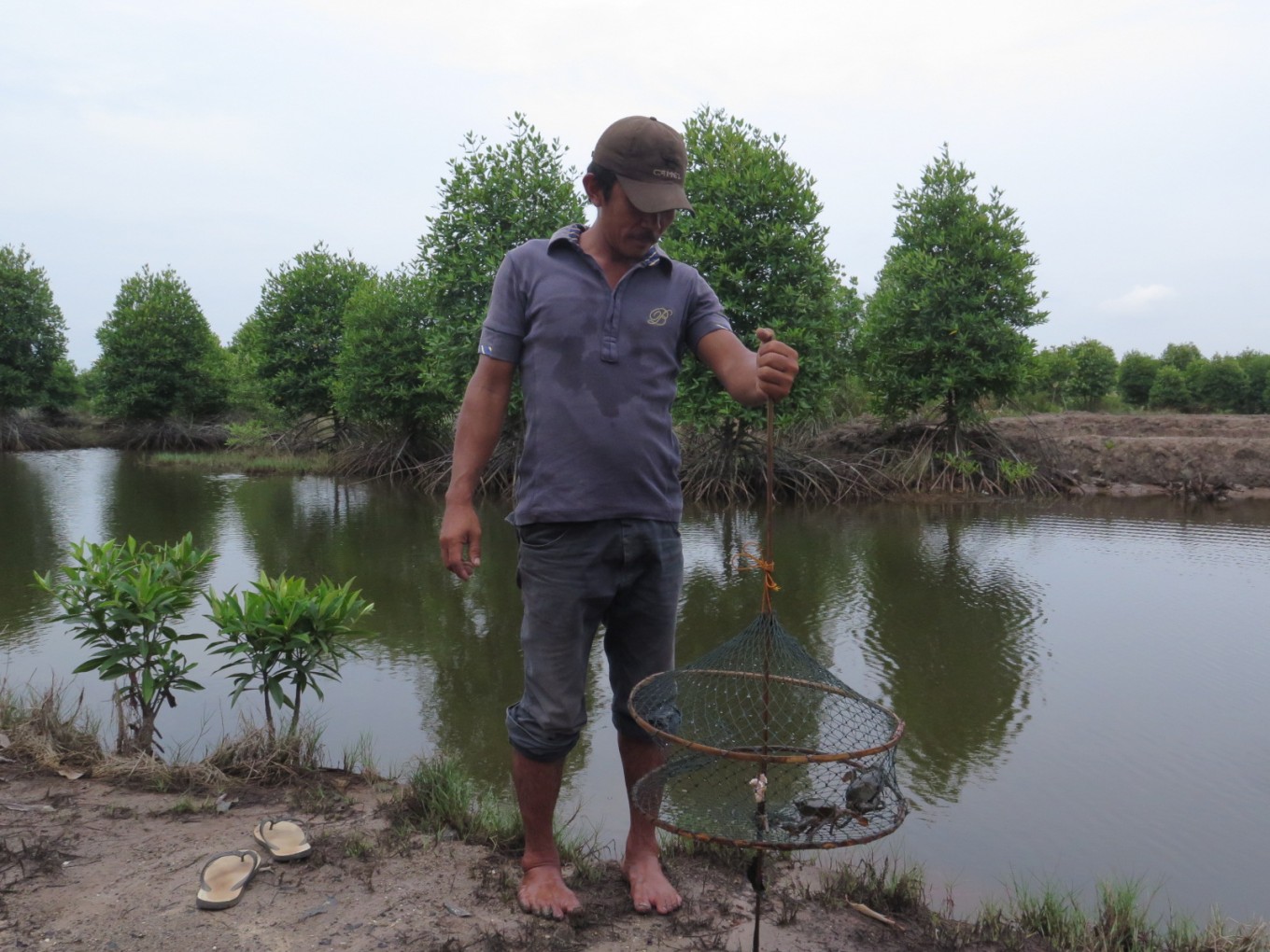
INDONESIA – In a coastal village in Langkat regency, a three-hour drive north from North Sumatra's capital of Medan, locals have started to reap the benefits from the hundreds of hectares of rejuvenated mangrove forests that had previously been illegally converted by companies into oil palm plantations. After securing a forest management permit in March 2017, Lubuk Kertang farmers and fishermen have constructed 20 eco-friendly ponds to farm shrimps, crabs and several local varieties of fish, as well as to produce snacks and syrups from mangrove leaves and mangrove apples. They also plan to construct an ecotourism site. As part of President Joko "Jokowi" Widodo administration's social forestry program, a permit was issued by the Environment and Forestry Ministry to Kelompok Lestari Mangrove, a group of 108 Lubuk Kertang farmers and fishermen, to manage 410 hectares of mangrove forests for a period of 35 years. READ MORE
Local approach tackles coastal erosion in Jambi
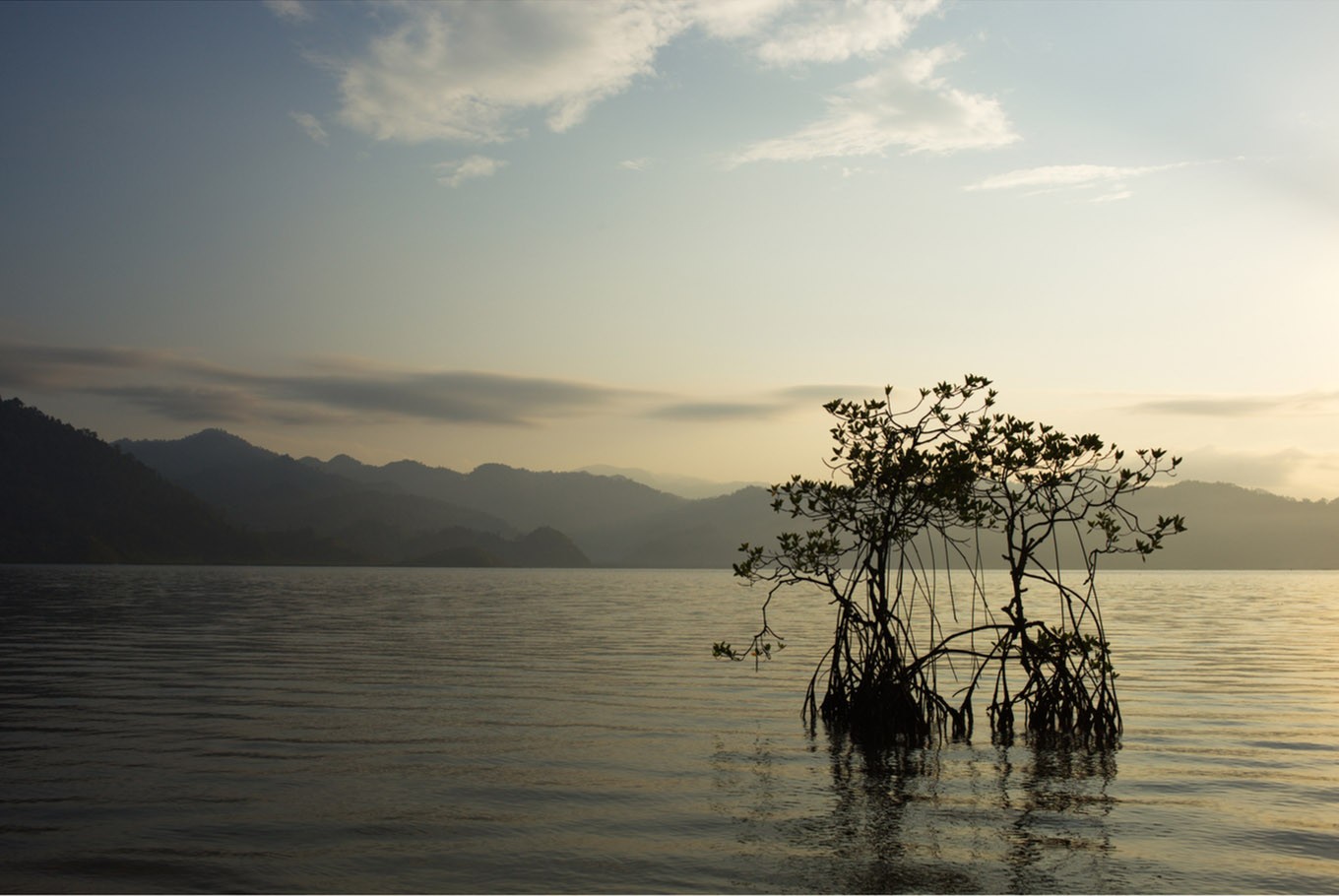
INDONESIA – Local methods are being used by residents and environmental groups to tackle coastal erosion in the Berbak Sembilang National Park in East Tanjung Jabung regency in Jambi. Various methods are being applied in accordance with the conditions and characteristics of each village where the abrasions take place, local group Gita Buana Association head Taufik Hidayat said. Since last year, local residents of Remau Baku Tuo, Air Hitam Laut and Sungai Cemara villages in Sadu subdistrict planted as many as 30,000 mangrove seeds along the coastal line of the villages. They also used bamboo fences with zig-zag or arrowhead patterns to protect the plants from sand, mud and wood waste deposited by the ocean. “It has proven to be a success by as much as 70 percent,” Taufik said.READ MORE
Subsidy offered for growing mangroves
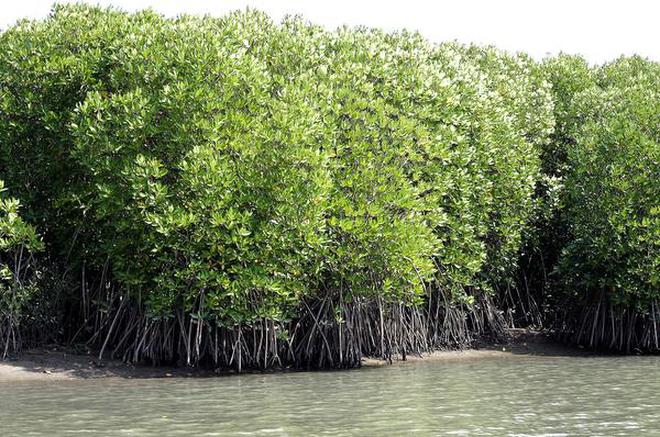
INDIA – Forest Minister K. Raju has said that private individuals will be offered subsidy up to ₹4,000 an acre for implementing the scheme for protecting mangrove forests in the State. Inaugurating the Mangrove Study and Research Centre and the Biodiversity Park at the at Kottila Government Higher Secondary School here on Saturday, the Minister said the government would pay the subsidy if the individuals were willing to plant mangrove saplings. The government was also willing to take over privately held lands under mangrove vegetation if their owners were prepared to transfer them for conservation. Mr. Raju said Kerala being one of the States with high forest area, the extent of forest had increased by 250 hectares over the past two years. This included mangrove areas in Kannur and Kasaragod districts declared forest areas, he said adding that mangrove afforestation was more effective and less expensive than building sea walls to protect areas from sea water flooding. READ MORE
AMERICAS
Mangroves to mudflats and not back again

USA – Over one-third of Earth's population lives with 100 km of a coastline and depend on the services that coastal ecosystems provide. Hurricanes can provide valuable sediments and nutrients that promote plant growth and increase the stability of some coastal ecosystems. However, storm surge, saltwater intrusion, wind, and extreme rainfall can knock down forests, lead to erosion, and transform plant communities. This can lead to an abrupt and irreversible ecosystem transformation In a southwestern section of Everglades National Park, hurricanes may have contributed to the conversion of mangrove forests to lower-elevation mudflats. The mangrove forests offer some protection from storm surge and can provide habitat stability. Long-term transformation to mudflats would have serious effects on the ability of coastal wetlands to persist against hurricanes and rising sea levels United States Geological Survey (USGS) scientists have measured surface elevation changes in these mangroves and adjacent mudflats for nearly 20 years, including changes brought on by Hurricane Wilma in 2005 and Hurricane Irma in 2017. Michael J. Osland, a USGS research ecologist, will speak on this research at the 2018 ESA Annual Meeting in August. READ MORE
The miracle of mangroves for coastal protection in numbers

USA – The North Atlantic hurricane season officially opens June 1, and there are predictions that storms this year could be worse than average again. That would be bad since last year was the costliest year on record for coastal storms. Communities and countries across the Caribbean and SE USA were particularly hard hit. The need for resilient solutions to reduce these risks is paramount. There has been growing though largely anecdotal evidence that mangroves and other coastal habitats can play important roles in defending coastlines. Nonetheless it has been difficult to convince most governments and businesses (e.g., insurance, hotels) to invest in these natural defenses in the absence of rigorous valuations of these benefits. So in 2016 The Nature Conservancy teamed with the World Bank and scientists from the public, private and academic sectors to identify how to rigorously value the flood protection benefits from coastal habitats. READ MORE
OCEANA
Mangroves and their deforestation may emit more methane than we thought

AUSTRALIA – Mangroves, the dense tangled forests that buffer land from sea in many coastal areas of the tropics, are renowned for their ability to store carbon and help fight climate change. But new research finds mangroves may emit more carbon as methane than previously estimated – emissions made even worse by deforestation. The ability of mangroves to sequester carbon in the ground – termed “blue carbon” – is unparalleled, with previous research finding a tract of mangrove can bury 40 times more carbon than a similarly sized area of rainforest. But what exactly happens to this carbon once it’s in the ground has been something of a mystery. So scientists at universities in Australia decided to find out by examining the soil carbon stored beneath mangroves in Queensland. Their results, published in Science Advances, reveal that mangrove soil carbon doesn’t remain stored in perpetuity. Some of it is transformed from carbon dioxide (CO2) to methane (CH4) by tiny microorganisims called archea, and is then released back into the atmosphere. Methane has a much bigger warming impact than carbon dioxide – 34 to 86 times more powerful – so even a bit of methane has the potential to offset mangrove CO2 storage. READ MORE
WORLD
The world is losing vital forests quicker than ever
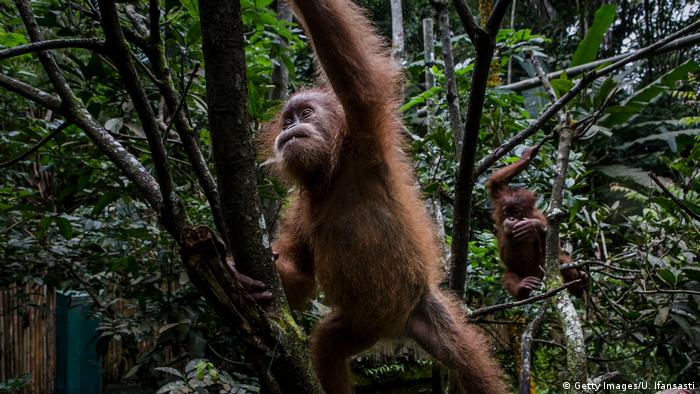
GLOBAL – Global Forest Watch detected that especially tropical forests continue to be chopped down. In 2017, 40 football fields of tropical tree cover were destroyed — every minute. The Democratic Republic of Congo, where part of the world's second-largest rainforest is located, saw a record tree cover loss in 2017 The Central African country lost 1.47 million hectares of tree cover in 2017 due to agriculture, charcoal production and mining In Brazil, 4.5 million hectares of forests were destroyed, down 16 percent from a record high in 2016, but still higher than any other year, the report said. Despite negative trends in most tropical forests around the world, there is one positive story: Indonesia. The Southeast Asian country managed to reduce its tree cover loss by 60 percent in primary forests in 2017, compared to 2016 when wildfires caused the highest tree cover loss on record. The sharp decrease is due to the fact that by 2017, el Niño had passed, but also due to improved government efforts to protect forests, said Putera Parthama, representative of Indonesia's Ministry of Environment and Forestry. READ MORE
Indigenous communities practice effective forest conservation, but remain excluded from policy

WORLD – The world today is in the grip of an existential crisis in more ways than one. The future of the Blue Planet has never before been clouded with more ominous portents. Yet some of its oldest inhabitants and indigenous peoples perhaps have been the best guardians of its natural resources, and a new report only confirms this. It is the indigenous peoples who have “long stewarded and protected the world’s forests, a crucial bulwark against climate change.” The report 'Cornered by Protected Areas' by Victoria Tauli-Corpuz, Janis Alcorn and Augusta Molnar, and the Rights and Resources Initiative, released on 27 June in Oslo, said the rate of tree cover loss is less than half in community and indigenous lands, as compared to elsewhere. Where community rights to own their lands are legally recognised, the difference is even greater. Worldwide, community lands hold at least a quarter of above-ground tropical forest carbon—equal to four times the global greenhouse gas emissions for 2014—and likely much more. Yet in countries like India, attempts to gain community forest rights are met with red tape. In forests in Karnataka and elsewhere, local communities face relocation as their traditional lands are taken away to conserve tiger habitats. READ MORE
Investing in indigenous communities is most efficient way to protect forests, report finds

WORLD – The best way to save forests and curb biodiversity loss is to recognize the claims of indigenous peoples to their territories, a new report urges. Published by the Rights and Resources Initiative (RRI), an international NGO headquartered in Washington, and Victoria Tauli-Corpuz, the UN special rapporteur on indigenous rights, the 28-nation study compares conservation outcomes in lands controlled by indigenous groups against those in government-managed “protection zones.” “This research shows that indigenous peoples and local communities are investing substantially in conserving their forests — up to $1.71 billion in the developing world,” the authors write. The figure amounts to between 16 and 23 percent of what the conservation establishment — governments, multilateral organizations, bilateral aid agencies, NGOs, foundations and private entities — spends each year. Through labor and capital put toward managing, protecting and rehabilitating forests, indigenous communities were found to achieve equal or better conservation outcomes — at a significant discount. READ MORE




























